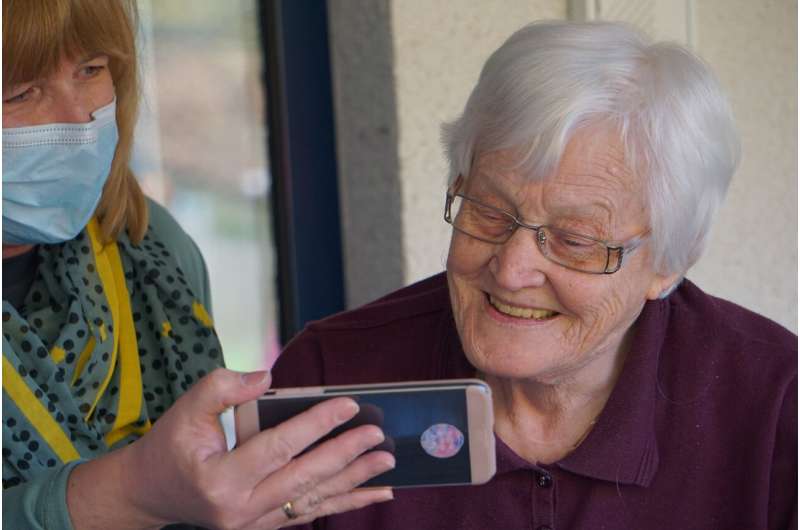
It was welcome news to see vaccination efforts against the COVID-19 virus begin in Ontario in December, and that the first recipient was a personal support worker from a long-term care home, Anita Quidangen. However, a successful vaccination campaign will not end the crisis in long-term care.
The COVID-19 pandemic has resulted in catastrophic levels of illness and death: 81 percent of the total COVID-19 deaths that occurred in Canada during the first wave were in long-term care homes, which is almost twice as high as other countries within the Organization for Economic Cooperation and Development. Long-term care homes have also been hit with devastating outbreaks during the second wave of the pandemic.
The age of frail residents and their complex co-morbidities are not the only reasons for the vulnerability in this sector.
Crisis in care homes is rooted in precarious work
The novel coronavirus is an occupational disease, which is a hazard that spreads rapidly at work. The crisis in the long-term care sector as well as many other susceptible workplaces reflects long-standing precarious conditions consisting of a predominantly racialized, immigrant and female workforce, combined with a novel viral pandemic, which results in presenteeism—in other words, continuing to work despite exposure to or falling ill from COVID-19.
As echoed in previous research, not only do precarious employees work at multiple sites, but there are significant financial consequences for workers if they call in sick. These workers are often employed in low-income jobs such as ancillary workers or support staff in the health-care sector, gig-economy employees, taxi drivers and temporary, contract or agency workers. They face financial penalties for missing work.
Although federal employment insurance sickness benefits offer qualifying workers a portion of their wages, the maximum benefit is only 55 percent of wages. In addition, there are waiting periods that may serve as disincentives.
Similarly, the Canada Recovery Sickness Benefit offers income support for workers with COVID-19, but it’s only $450 a week after taxes. In addition, workers can only apply after missing 50 percent of their work week, meaning they cannot use it to stay home when sick on the first day of symptoms.
All of this means that precariously employed, low-wage workers have little incentive to be away from work when sick if they are already struggling to make ends meet on their full salaries. Indeed, recent research suggests that in the long-term care sector, workers did not earn enough to adequately provide for their families. Income inequalities combined with racism have also been reported. So while the COVID-19 vaccine seems promising, an important question is: How does one vaccinate against precarious work?
Paid sick days for all amount to health equity
Addressing the current crisis requires both a vaccine against the coronavirus and policies that support precarious workers, such as paid sick days. The Decent Work and Health Network has been advocating for paid sick days for years. As the network explained in its recent report, paid sick days are crucial for public health and for achieving equity.
The report notes that groups who are in most urgent need of paid sick days—those who have experienced higher rates of COVID-19 and greater economic repercussions during the pandemic—are the low-wage racialized workers who are among the least likely to have these benefits: “Like vaccines, paid sick days must be universal in order to protect the most vulnerable. The crisis in long-term care illustrates how precarious work and gaps in paid sick days expose the most vulnerable.”
Dr. Teresa Tam, the chief public health officer of Canada, has called for paid sick days, both to counter the current pandemic and to make society healthier and more equitable. As she describes in her Report on the State of Public Health in Canada 2020, the long-term care crisis is rooted in long-term precarious work. She identifies several factors that were significant for personal support workers in long-term care: “… these disadvantages include economic and employment insecurity, a lack of paid sick leave, and the need to work multiple jobs to make ends meet.”
Among the specific actions she calls for are minimum staffing levels and quality full-time jobs with benefits that include paid sick leave.
The Ontario COVID-19 Science Advisory Table’s new report on COVID-19 and Ontario’s Long-Term Care Homes has evidence-based measures to reduce outbreaks and deaths both with and without the COVID-19 vaccine. These include improved working conditions and guaranteed paid sick leave.
The need to address precarious work has never been so urgent, and the call for paid sick days has never been so widespread—from nurse and physician associations to mayors and chief medical officers of health.
Address the conditions that nurtured outbreaks
Addressing the effects of the pandemic requires both vaccinating against the virus and improving the working conditions that nurtured it, especially those of low-wage immigrant, racialized and female groups working in long-term care. Paid sick days are an essential complement to the vaccine, and part of returning to a new, healthier normal.
Source: Read Full Article
